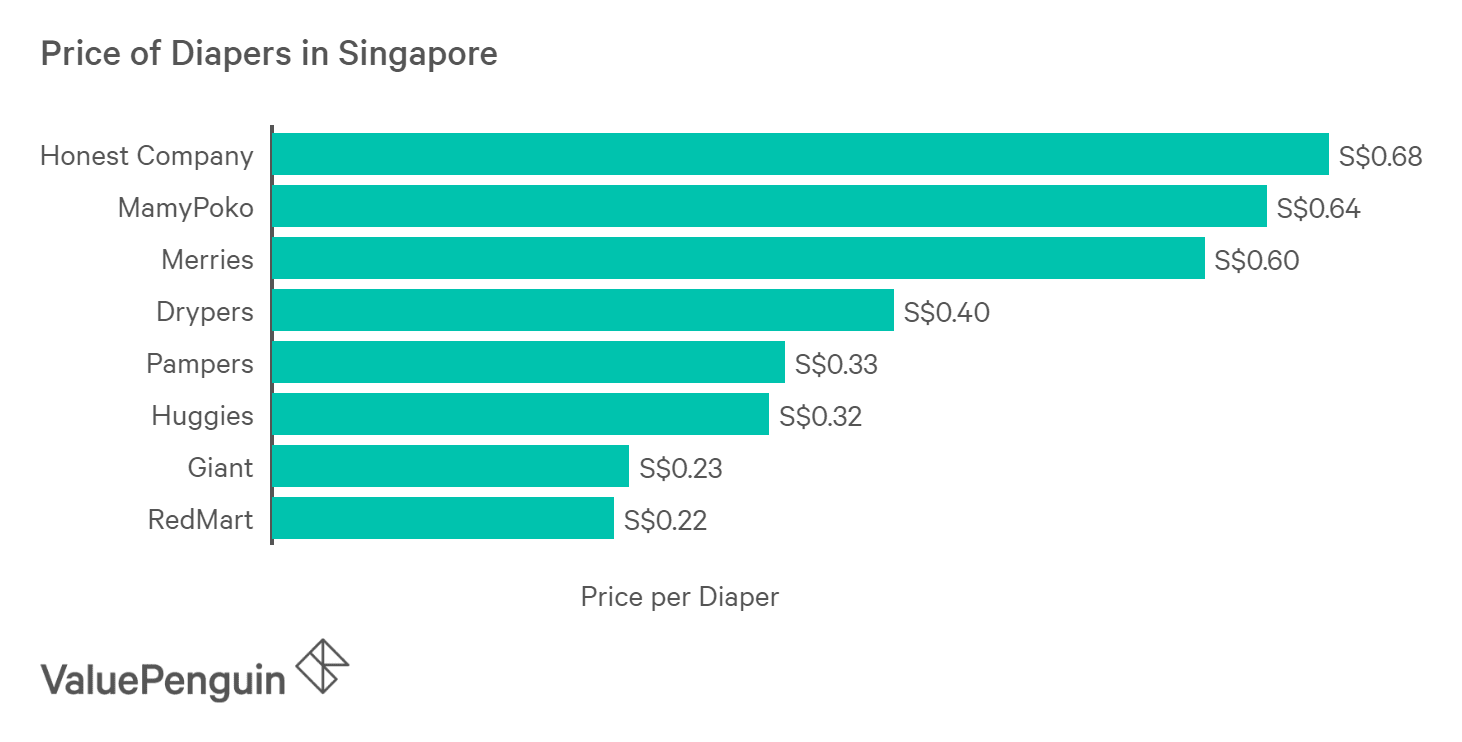Newly wed couples and parents of young babies just got one more reason for concern. While families already spend about S$1,000 to S$1,500 per year on diapers, Procter & Gamble, one of the biggest manufacturers of diapers in the world, recently announced that it will raise prices on Pampers by about 4% later this year, with its rival Kimberly Clark also signaling a similar move. While 4% may not sound like a big change, young parents could be facing a rather significant increase in living cost over time given that babies typically need diapers for several years. Not only that, families could face a general increase in price of essential paper products like toilet papers and tissues as well.
Why Are Diapers Getting More Expensive?
To understand why P&G decided to increase its pricing on diapers, it’s important to understand what is impacting the cost of its most important raw material: paper. Over the last decade or so, the paper industry has been suffering due to the rise of internet, which drastically reduced the demand for paper products like newspapers and books. After years of restructuring and reducing capacity, however, paper mills now face a favorable supply and demand dynamics and are able to raise paper prices to increase their profit levels. In particular, various natural disasters affecting the supply chain of paper in the past year and increased demand from emerging markets (i.e. China) have contributed significantly to rise in paper pulp prices in both the US and China.

What this means is that P&G and Kimberly Clark are merely responding to a rise in their production cost, and aren’t necessarily raising price just to increase their profit margins. In fact, this also implies that consumers could see a price hike in any paper products that they use at home, including toilet papers, paper towels and tissue papers.
How to Reduce the Impact of Rising Diaper Cost
Given the global scale of factors influencing diaper prices, parents may feel helpless. However, they still have some options that they can take to offset the impact of rising paper cost. First and foremost, switching to a generic brand can help you save a considerable amount of money. For example, generic housebrand products from supermarkets in Singapore generally cost 30-50% less per diaper than well-known brands like Pampers and Huggies. On the other end of the spectrum, “niche” brands like Honest Company actually cost 50% higher than big name brands. Of course, some parents may not be willing to risk anything when it comes to what their babies will be wearing. Still, those who are cost-conscious may find it worthwhile to try a variety of different generic brands by purchasing the smallest size available to see if a less-expensive option is a good fit. If not, switching to generic brands for other paper products is also a good option.

Secondly, buying in bulk is generally a great way to find savings. However, one caveat here is that you need to be careful not to buy too much of one size. Mayo Clinic advises parents that a baby will usually double his or her birth weight in 5 months, with a gain of 5 to 7 ounces each week. From 6 to 12 months, a baby’s weight gain slows down to between 3 to 5 ounces each week. Generally, size 4 covers the biggest weight spread (between 22 and 37 pounds) with size 3 close behind (covering between 16 and 28 pounds). If you want to buy in bulk, try and double down on those sizes to get the most bang for your buck.
Last but not least, you should make sure to get a credit card that provides cashback on your grocery purchases at supermarkets, if you don’t have one already. For example, Citi Cash Back Card, POSB Everyday Card and OCBC 365 Card are all great great grocery credit cards that provide 3-8% rebate on your purchases at supermarkets. If you had been using some other card with much lower rewards rate for buying diapers and other household goods, switching to one of these cards can help you earn enough rebate to more than offset the 4% increase in diaper prices.
The article Diapers Are Going to Become More Expensive: What Can You Do? originally appeared on ValuePenguin.
ValuePenguin helps you find the most relevant information to optimise your personal finances. Like us on our Facebook page to keep up to date with our latest news and articles.
More From ValuePenguin:
- Best Cashback Credit Cards 2018
- Best Grocery Credit Cards 2018
- Best Credit Cards with Promotions 2018
Source: VP

